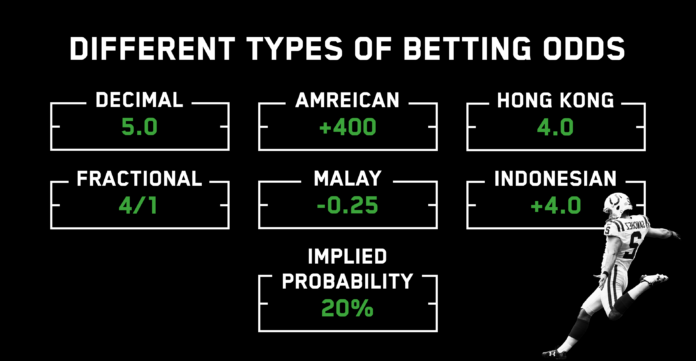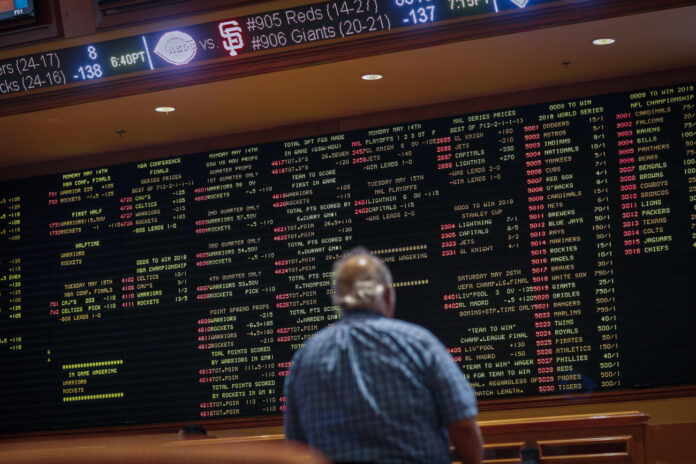Understanding betting odds is key to becoming a successful sports bettor. Odds represent the likelihood of an outcome occurring and the return profit you stand to make from a winning wager. By learning how to read odds correctly and use them to your advantage, you put yourself in a position to make informed bets.
Reading and Calculating Betting Odds

Bookmakers use several different formats to convey the odds for wagering. The three most common are:
Fractions
Fractions quote the potential profit relative to the amount wagered. For example 3/1 odds mean for every $1 staked, the bet will return $3 profit. The total return is the initial $1 plus $3 equalling $4.
Decimals
Decimals show the total return for a $1 bet, including the original stake. 1.33 odds indicate a total return of $1.33 – $1 is the original stake, and $0.33 is the profit.
Moneyline

Moneyline odds quote potential winnings relative to a $100 stake. Odds of -120 mean a $100 bet returns $183.33 – the original $100 plus $83.33 profit. +180 odds returns $280 on a $100 bet ($100 stake + $180 profit).
| Odds Format | Example | Total Return on $10 Bet |
| Fraction | 5/2 | $25 |
| Decimal | 2.50 | $25 |
| Moneyline | +150 | $25 |
Take time to familiarize yourself with each format and how to translate odds into potential returns. This will make reading odds and comparing royal casinos values much easier.
Digging Deeper Into Betting Odds
There are additional factors to consider beyond the basic numbers when assessing betting odds:
Implied Probability
Determine the percentage chance the oddsmakers give an outcome occurring. Divide 1 by the decimal odds. Odds of 2.50 imply a 1/2.50 = 40% chance. Understanding these percentages is useful when judging if odds represent good value.
Overrounds
The margin built into the odds by bookmakers to ensure they profit. Add up the implied percentages for all possible outcomes – they’ll typically exceed 100%, indicating the overround. It’s normally 5-15% but varies by sport. Comparing overrounds lets you detect the best odds.
Line Movement
Observe how the odds change in the lead up to an event starting. Significant line movements suggest heavy betting action from sharp bettors. Make notes whether odds are shortening (implying more likely) or drifting (less likely). Analyzing line moves is insightful for your own betting.
By studying these additional variables, rather than just the headline odds, you gain a deeper perspective into the market’s expectations. This allows making educated bets based on true probability and value.
Utilizing Betting Odds Data Models

Serious sports bettors use data models to exploit betting value opportunities. Models overview:
Raw Number Crunching
Crunching statistics then comparing to sportsbook odds to detect mismatches to capitalize on. E.g. if you rate Team A with a 60% chance to beat Team B, but the odds imply 45%, you have an edge.
Machine Learning
Feeding algorithms historical data like team/player stats, weather, injuries to build predictive models pinpointing betting value. Models improve automatically over time as more data gets input.
Subjective Adjustments
Even the best models have flaws. Smart bettors manually adjust raw model outputs using their sports knowledge. E.g. key player injury not yet factored into the algorithm’s projections.
Leveraging data modeling elevates your betting process from gambling to calculated projections. Even building your own basic models can lead to betting advantages over recreational gamblers playing blindly.
By understanding the true probability around sporting outcomes, rather than just the presented odds, together with a data-driven process, you stack the deck in your favor and minimize long-term losses. This upholds the mantra that it is not gambling but rather informed strategic investments based on math.
6 More Tricks That May Help In Sports Betting

-
Specializing in a Niche Market
Focusing on a niche market in sports betting can be highly advantageous. Instead of betting on mainstream sports or leagues, specializing in less popular sports or specific leagues can offer better chances for finding valuable bets.
These markets are often less scrutinized by bookmakers, potentially leading to more favorable odds for well-informed bettors. Specializing requires in-depth knowledge of the niche, including teams, players, and the dynamics of the sport.
-
Utilizing Statistical and Analytical Tools
Leveraging statistical tools and analytics software can provide a significant edge. These tools help analyze vast amounts of data to spot trends, patterns, and statistical anomalies that might not be apparent at first glance. In today’s data-driven betting landscape, using these tools can help in making more informed and objective betting decisions.
-
Following Professional Bettors and Tipsters
Observing and learning from professional bettors and reputable tipsters can be beneficial. Many professionals share insights, strategies, and tips either through social media, betting forums, or dedicated platforms. However, it’s crucial to distinguish between genuine, experienced bettors and those selling unfounded tips. Always approach with a critical mindset and consider using their advice as a part of a broader strategy.
-
Exploring Arbitrage Opportunities

Arbitrage betting means placing bets on all possible outcomes of an event with different bookmakers. This requires quick action and careful calculation, as these opportunities are usually short-lived due to rapidly changing odds. While it’s a low-risk strategy, it requires a good understanding of odds and often a substantial bankroll to see significant returns.
-
Keeping an Eye on Late Market Movements
Monitoring odds movement shortly before an event starts can be telling. Late shifts in odds can indicate insider knowledge or last-minute developments (like player injuries or weather changes). This requires constant vigilance and quick decision-making, as the betting landscape can change rapidly.
-
Developing a Contrarian Betting Approach
Adopting a contrarian betting approach means going against the general betting trends. Sometimes, the majority of bets are placed based on public bias rather than actual probabilities. By identifying these instances and betting against the crowd, you can capitalize on inflated or skewed odds.
Final Tips
- Understand the different odds formats inside out
- Calculate implied win chances to determine if odds represent value
- Observe line movements to leverage public perception
- Build data models to consistently find betting value
- Use sports knowledge to manually adjust projections
If you take the time to learn how to decipher betting odds and use them to your advantage, you set yourself up for betting success. Odds compilation and calculations turns sports betting into a skill-based pursuit like stock investing by enabling informed data-driven decision-making. So approach sports wagering strategically, not as a recreational gamble.








